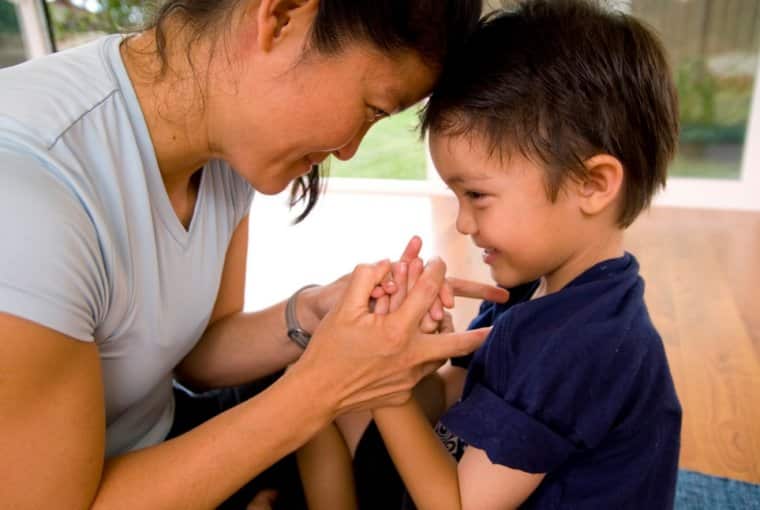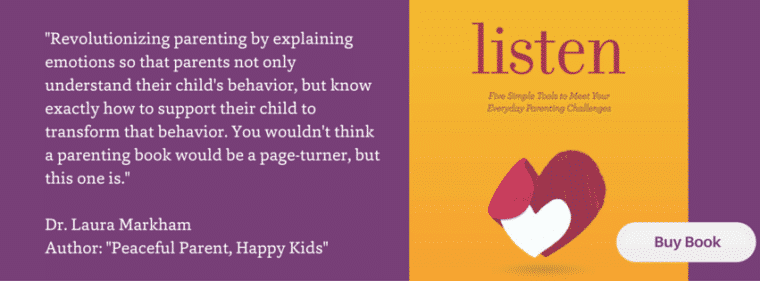![]()
Your son has been acting out all day. First he grabbed his friend's toy truck at a playdate and refused to play nicely. He threw it across the room when you asked him to return it. Then when you got home he ate just two bites of a sandwich, turned his plate upside down and tipped his water all over. Now, you've come into the living room to find that the paper you left out is still blank, but your walls are covered in crayon.

“What's with this kid?!” you think, clenching your fists and battling the anger.
Surely, this calls for a time out?
One Acceptable Time Out
It depends what you want. If you need a break from your child right now, a time out for yourself might be well advised. Tell him, “I'm going to the kitchen for five minutes to calm down, before we decide how to clean these walls.”
But if you want your child to consider his behavior, then a time out is not your answer.
Time out is solitary confinement, and it's unlikely your two-, three-, or even your eight-year-old will sit in his spot considering his actions and how they upset you. He might learn that a “sorry” once the ordeal is over gets him off the hook, but he also learns that his caregivers are not interested in his feelings, and that when he is hurting the best thing to do is hide those feelings.
If you view off-track behavior as your child showing he needs you, then a time out proves to him that those feelings are not getting heard. “He learns that your love is conditional; you will stop acting like you care when he acts out,” says Patty Wipfler in the introduction to her book, Listen: Five Simple Tools To Meet Your Everyday Parenting Challenges.
Children do not set out to be bad, she says. But their brains are wired to shut down when they are upset and feel disconnected. They are unable to articulate how they feel in words, but their behaviors – the toy throwing, the refusals, the whining, the cries – are their way of showing us that things are not right.
So what's a modified Time Out?
When we view off-track behavior as a symbol of need, we know attention should follow fast. Hand in Hand's tools offer us a few ways to give this attention.
Snap into Special Time
During Special Time, your child leads the play as soon as you say “What would you like to do?” This is your modified Time Out. Special Time is offered the minute you spot your child moving off-track. Step in and offer that reconnection. Set a specific amount of time where you do nothing but focus on your child and what he wants to do in that moment.
In the story above, the mother could have offered her son Special Time at the playdate when he took the truck and wouldn't give it back.
Even a few minutes of this undivided attention can be enough to show a child that you care, you are in tune with his needs, and that you are there for him. Just as your child can't always articulate in words, sometimes he misses your own “I love yous,” or loving touches. Sometimes he needs to bask in your full attention to feel seen.
Regular Special Time gives your child a constant way to reconnect and many parents using it notice their children are calmer, more able to complete requests, and do not tantrum as regularly. But an extra session of Special Time as a child begins to veer off may mean that you never need to threaten time out again. once he feels connected, he smiles. He's relaxed. He's happier responding to requests.
What if I get There Too Late?
However, if you find cups flying across the room or your daughter pummelling her sister with punches, it might seem there's no alternative to a time-out. How else do you stop the behavior?
It's true that the child's cries for help have escalated until there's no ignoring them, but instead of a time out try Setting a Limit.
Take a breath and move in calmly to stop any disruption. If your child is throwing, gently hold the hand with the object, and give a firm, “No throwing.” If they are fighting, move between them and say, “I can't let you hurt your sister.”
You might get anger. A big attitude. “I don't care,” or even “I hate you,” are not unusual. Those reactions tell you that your child is struggling to hold in a mass of emotions.
If he attempts to run or shrug you off, try and stay close. Tell him you can see he is having a tough time, and that you'll be close while he feels bad. Offering kindness and warmth with your limit signals that he is safe, and that sense of safety tells him he has the all clear to let go.
Big, heavy sobs may follow, or wailing screams. Again, stay close. Offer just a few, occasional, soft words of comfort: “I'm right here. I won't leave.”
At this point, you and your child are having a time in, rather than a time out, with you offering closeness as he offloads. Something special here shared. A way to reconnect. This tool is called Staylistening, and it's a world away from the harshness of getting sent to time out.
 Children are like adults in that when they shed tears they are able to feel better afterwards. If you can stay with them as they cry, you'll see a return to him thinking rationally soon.Even better, he'll be lighter. Like the worry has gone away so that he can return to being that gorgeous child you have so much love for.
Children are like adults in that when they shed tears they are able to feel better afterwards. If you can stay with them as they cry, you'll see a return to him thinking rationally soon.Even better, he'll be lighter. Like the worry has gone away so that he can return to being that gorgeous child you have so much love for.
Meeting challenging behavior with empathy re-enforces your child's trust in his caregiver. Seeing it in action, he, in turn, learns empathy for others. And with his strong connection to you comes a greater desire to please. And that's the time to make a deal about scrubbing crayon off the walls.
From the Hand in Hand Toolbox:
- Find out what's so wrong with time outs
- Learn why listening to your child crying helps them more than you could imagine
- Enjoy this free download, 5 Revolutionary Ideas That Make Parenting Less Stressful
- Our book is out now! www.listenthebook.com
